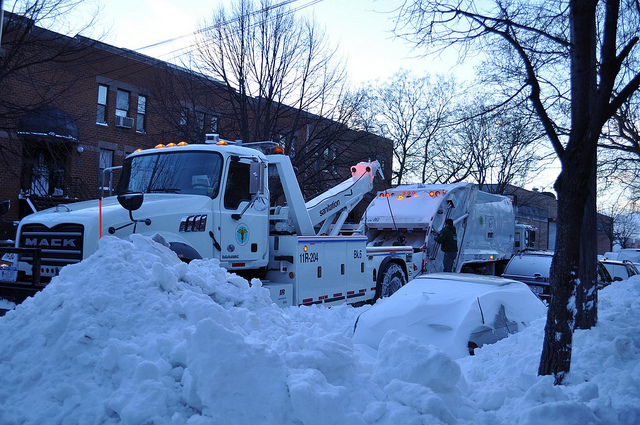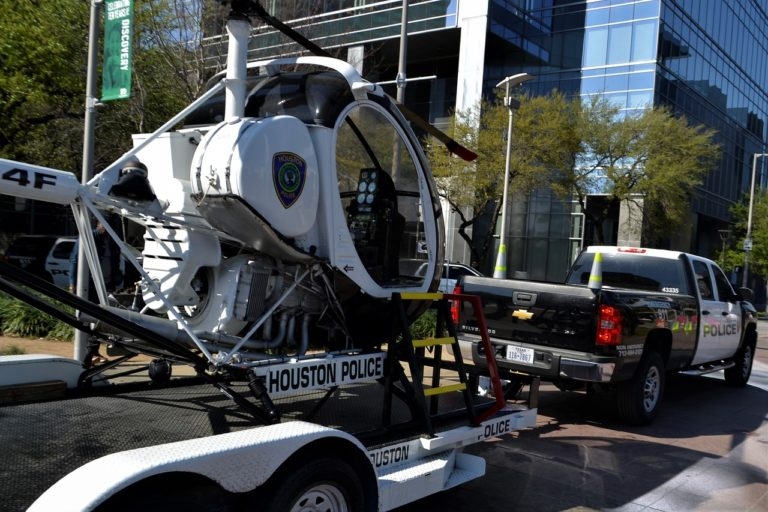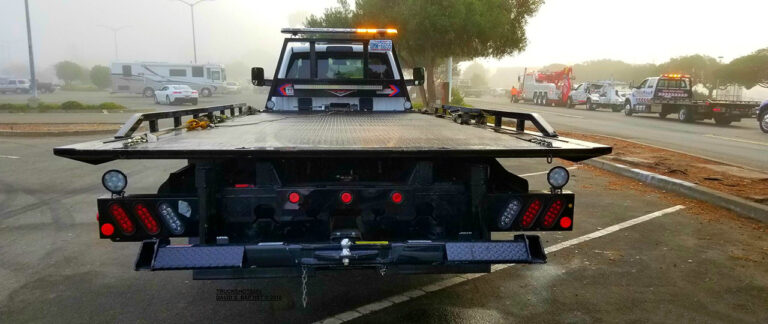It’s February in North Carolina and winter is decidedly upon us.
For me it feels like it’s going to be a long one. So buckle in, get comfortable with a blanket: we’re going to talk more about towing service, tow trucks and winter conditions. As discussed in a previous post on winter towing, we recommend having a plan in place to deal with winter driving as well as the need to winterize your diesel tow trucks. I’m going to follow up on that pertaining more to diesel rigs and talk a little about safe winter techniques.
Know Your Rig
I know I’ve said this before, but it would look damn silly if you’re tow truck has to get towed out of a snow ditch. Know your trucks limitations. It can do a lot, especially if you’re equipped with a winch and outriggers, but it can’t do everything. A rookie mistake is thinking that you can get some extra leverage by driving off in a ditch – JUST A LITTLE couldn’t hurt – could it? I’ll tell you from experience that it can and will get you stuck – so stay on the pavement if at all possible.
Also (and I know I’m getting preachy here), keep an eye on the road for unsafe drivers in a snow or ice situation. Here in the south we have plenty of would-be race car drivers looking to pass you on icy hills in vehicles with little to no tread left. Let these people pass, and go about your business – that’s all I’ll say on that topic.
Starting your Tow Truck
Starting your tow truck in the morning of sub-zero can be difficult, especially if the truck has been sitting for a while. By employing some preventative and common sense techniques below, you can save yourself a big headache down the road.
- If at all possible, store your truck inside. Even if that inside is a storage shed, the few degree difference can make a big impact.
- If it’s consistently below 15 degrees F overnight, use #1 diesel blend fuel. It’s arguably less efficient, but it won’t gel like #2. Make sure it’s topped off at the end of the day, or every other day (depending on how much you drive).
- If you’re getting below the zero degree mark, you may want to look into adding anti-gelling supplements like this
- Air Fuel / Water Filter: If you’re still having issues starting. You may have some issues with fuel gelling in the lines or in the Fuel / Water filter. Consider getting glow plugs (not jacket water heaters) to warm up these areas and try again. If this fails to work, replace the filters.
- Batteries: Test your batteries under load and replace them as part of your PM schedule if they’re over 3 years old. Make sure to clean the terminals (we do this on a monthly basis), especially if you’re in a region that salts the roads.
- Anti-Freeze Additives: If you’re going to add a cold weather additive to your coolant, make sure you flush your system out with water (obviously in a warm area) and apply the recommended amount to the system.
Other Winter Maintenance Considerations
- Rubber Components: Cold weather can do a number on your rubber parts. Make sure you get under the hood and check your belts, radiator and hose fittings for material cracks or bulges that are more likely to fail during the winter months.
- Wiring: On a monthly basis, check to make sure the quick disconnects are properly seated and replaces any rusted terminals. This is an absolute must for any areas that salt the roads during the winter months.
- Heater / AC: Before winter sets in, test your heater under load and with the AC on to make sure that it’s functioning properly before the winter months kick in.
- Air / Fuel Water separator: Drain your water / fuel separator on a weekly basis. As with any wide temperature disparity, water condensation will increase in these lines, making it more likely to be frozen during startup. If the temperature dips below 0 degrees F, you should consider increasing that to a daily maintenance item.
Follow these easy to incorporate maintenance items into your daily routine and it will save you peace of mind and possibly a day worth of making a living in the process. Stay safe and chat at you soon…Carl.




